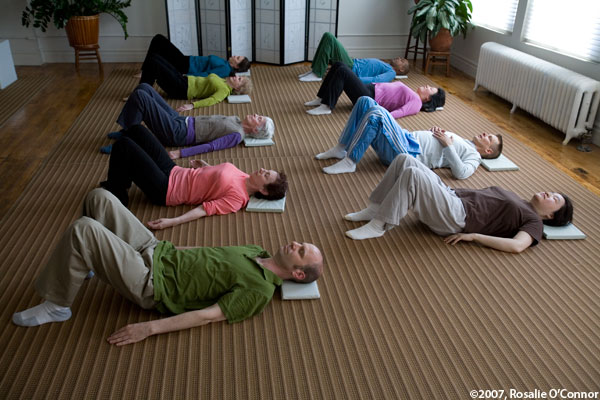by Dr. Tim Sobie, PT, Ph.D., GCFP
The statistics are daunting, if not downright depressing: 80% of adults experience low back pain at some point in their lives. The most common treatments include prescription medicines, chiropractic treatments, or physical therapy rehabilitation, typically with a focus on core stabilization. The theory behind core stabilization is that if you focus on strengthening your deep trunk muscles, you will be able to utilize your “core” more and put less strain on your back.
The approach doesn’t seem to be working for everyone: pain sufferers have rated physical therapy and other usual treatments to be effective for low back pain about half of the time1. Maybe one of the reasons that these customary treatments seemingly fail to consistently work is that they are often not individualized. They most typically exist as pre-prescriptive and pre-conceived treatment protocols that are designed to assume a ‘specific correction’ being necessarily applied to match a specific examiner’s ‘presumed’…and/or sometimes…‘one-size-fits-all’ labeled cause.
Indeed, statistics have shown that 9 out of 10 people who experience back pain never find out the primary cause of their back pain, despite going to from doctor to doctor, and getting varied opinions, while also getting various treatments. Among these, the idea of ‘deficient core strength’ remains most common.
Focusing on the mid-section of the body as the most important region for strength and conditioning can result in patients adding an extra layer of contraction and protection to their already tense and protective muscular states. In a critical literature review summary entitled “The Myth of Core Stability,” Professor Eyal Lederman, Physiotherapist, Ph.D., and Doctor of Osteopathy in London, concluded that:
a. Weak trunk muscles, weak abdominals, and imbalances between trunk muscles groups are not a pathology, just a normal variation
b. the division of the trunk into core and global muscle system is a reductionist fantasy, which serves only to promote Core Stabilization;
c. weak or dysfunctional abdominal muscles will not lead to back pain;
d. tensing the trunk muscles is unlikely to provide any protection against back pain or reduce the recurrence of back pain;
e. core stability exercises are no more effective than, and will not prevent injury more than, any other forms of exercise or physical therapy;
f. core stability exercises are no better than any other form of exercise in reducing chronic lower back pain. Any therapeutic influence is related to the exercise effects rather than stability issues;
g. there may be potential danger of damaging the spine with continuous tensing of the trunk muscles during daily and sports activities; and
h. patients who have been trained to use complex abdominal hollowing and bracing maneuvers should be discouraged from using them.
If you’re looking for a viable alternative to core stabilization, a recent clinical study by my research facility has shed light on perhaps a more effective option: the Feldenkrais Method®. Our study’s results revealed that a novel eight-week Feldenkrais Method-based treatment approach demonstrated greater effectiveness across all relevant outcome measures for:
1. decreasing pain,
2. decreasing perceived disability,
3. increasing function, and
4. increasing endurance
A publication link summarizing Dr. Tim Sobie’s Clinical Research and Dissertation Study can be found here.
 Dr. Tim Sobie, PT, Ph.D., GCFP is the founder and clinical director of Alliant Physical Therapy and Integral Medicine, PLLC in Tacoma – Gig Harbor – Olympia, Washington, USA. With over 30 years’ experience as a physical therapist and over 20 years’ experience as a Feldenkrais practitioner, he continues to design innovative research applications investigating practical inquiries between the traditional disciplines of physiological psychology and physical therapy / physical medicine – and especially within the Feldenkrais Method as applied to chronic or recurring neurological and musculoskeletal conditions. Find out more at alliantcare.com.
Dr. Tim Sobie, PT, Ph.D., GCFP is the founder and clinical director of Alliant Physical Therapy and Integral Medicine, PLLC in Tacoma – Gig Harbor – Olympia, Washington, USA. With over 30 years’ experience as a physical therapist and over 20 years’ experience as a Feldenkrais practitioner, he continues to design innovative research applications investigating practical inquiries between the traditional disciplines of physiological psychology and physical therapy / physical medicine – and especially within the Feldenkrais Method as applied to chronic or recurring neurological and musculoskeletal conditions. Find out more at alliantcare.com.

